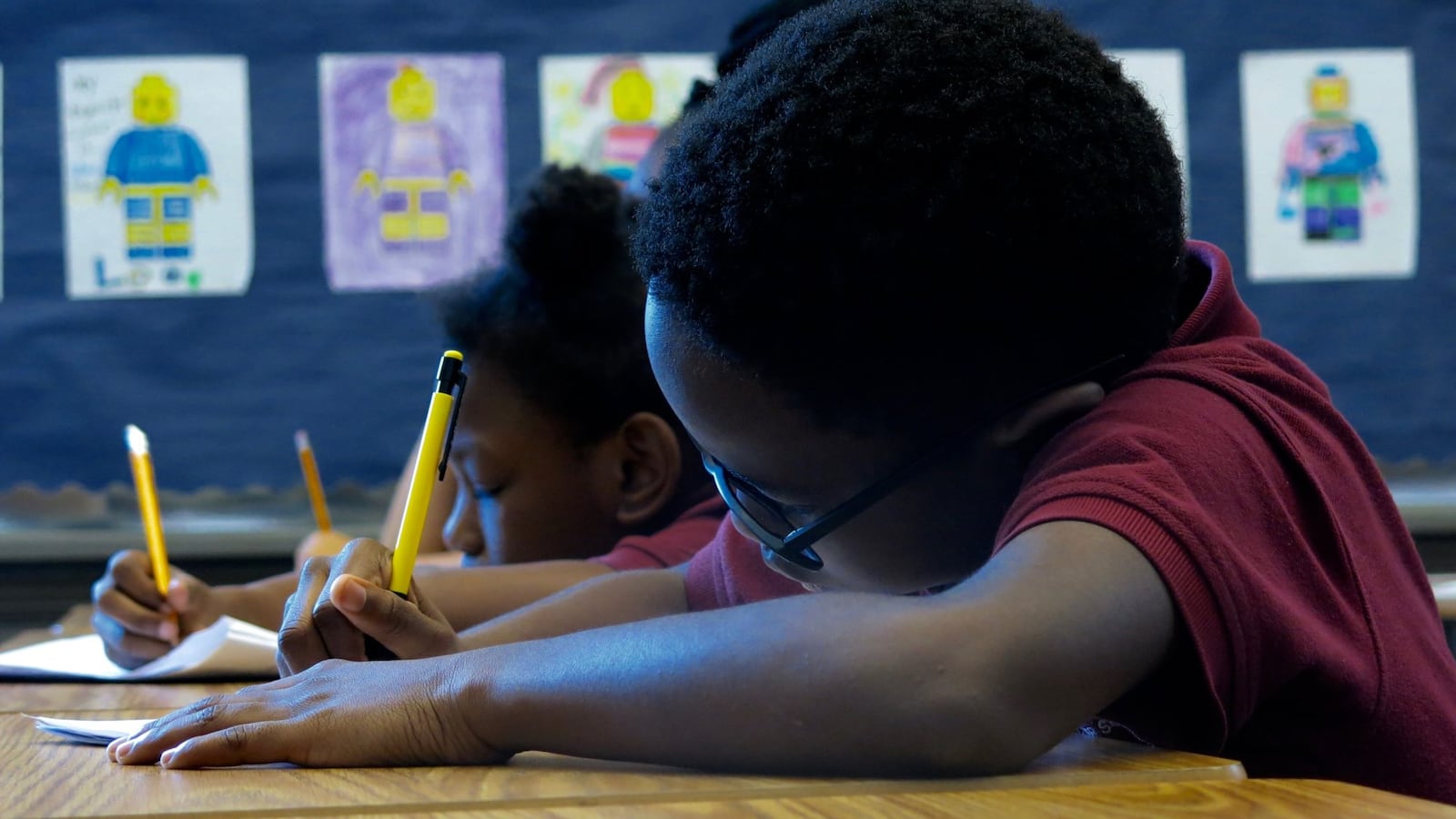The achievement gaps between racial groups in New York City appear as soon as students begin taking state tests and get worse over time, according to a new analysis of state test-score data.
Black and Hispanic students score below their white and Asian peers beginning in third grade, then fall further behind as they move into middle school, according to a report released Tuesday by the city’s Independent Budget Office.
The analysis follows roughly 71,000 individual students who entered third grade in 2008, tracking their state standardized test scores through seventh grade (in math) and eighth grade (in reading). The study, which includes students in traditional and charter schools, controls for factors such as students’ disability status, poverty level, and the schools they attended — suggesting that racial gaps cut across different schools and student groups.
While this study can’t say whether the city is getting better over time at closing these gaps, it does show that — at least among one cohort of students — the disparities worsened as students got older.
“A stated goal of a lot of education reform over the last 15 years” has been an effort to narrow the performance gaps between black and Hispanic students and their white and Asian peers, said Ray Domanico, the IBO’s director of education research. “It’s sobering that these gaps grow over time and the school system doesn’t seem to be making a dent.”
Here are the six takeaways from the report:
1. Black and Hispanic students started off far behind.
Roughly a third of black and Hispanic students in that 2008-09 cohort landed in the bottom quartile on the reading tests — meaning they earned lower scores than 75 percent or more of test-takers. By contrast, just 13 percent of white and Asian students fell in that lowest tier.
The gaps were similar in math, with Asians doing a little better than whites and Hispanics narrowly outperforming blacks.
2. As they got older, black students lost ground.
Over time, black students in that cohort fell further behind.
By eighth grade, 33 percent scored in the lowest quartile in reading — a 4 percentage point increase from third grade. In math, 35 percent were low-performing, a 3-point increase.
Meanwhile, the share of white and Asian students in the bottom rungs of reading and math grew smaller.
3. Hispanic students made slight gains in reading, but not math.
By the end of middle school, the percentage of Hispanic students in the bottom quartile in reading had shrunk by 3 points — narrowing from 33 to 30 percent. In math, it stayed the same: 30 percent.
That slight improvement in reading helped narrow their gap a tiny bit with their white peers, but not with Asians.
4. By eighth grade, Asian students led the pack in reading and math.
If black and Hispanic students were over-represented in the bottom rungs of achievement — Asians dominated the top.
In third grade, nearly half of Asian students scored above the 75th percentile — a larger share than any other racial group. In reading, they landed slightly behind white students.
By eighth grade, Asian students had widened their lead in math, with 59 percent making it into the top quartile — a 10-point leap from third grade. And in reading, 49 percent reached the top rung.
In both subjects, they made up a larger percentage of top scorers than all other racial groups, including whites.
5. Black boys came out on bottom.
In both reading and math, black boys represented a far greater share of low-performing students than boys in any other racial category.
By the end of middle school, 41 percent of black boys scored in the bottom quartile in reading, and 38 percent were low-performing in math. White boys, by contrast, had just 14 percent in the bottom rung in reading, and 10 percent in math.
6. Among all races, girls out-shined boys in math.
Starting in third grade, female students outperformed their male peers in math: 29 percent of girls across all racial groups scored in the top quartile, compared to 26 of boys.
By eighth grade, the girls’ lead had shrunk to 1 percentage point — but they still bested the boys.
In response to the report, education department officials said they are committed to reducing achievement gaps through a series of initiatives. Those include additional computer-science courses, algebra classes for all middle-school students, and expanded free preschool. They also noted that black and Hispanic high-school students have seen improvements in graduation and dropout rates relative to their peers.
“The purpose of our Equity and Excellence for All agenda,” said education department spokesman Will Mantell, “is to close the achievement gap and ensure a high-quality education for all students.”

